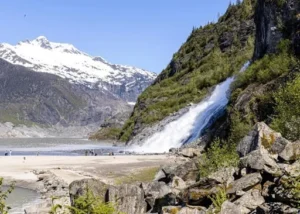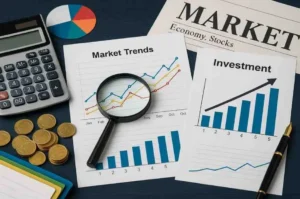As one of the largest and most unique states in the United States, Alaska’s economic development strategies are crucial for driving growth and prosperity across the region.
With its vast natural resources, strategic location, and diverse industries, Alaska has immense potential for economic advancement. The state has recently implemented various strategies to foster sustainable development, attract investment, and create opportunities for its residents.
One critical pillar of Alaska’s economic development strategies are promoting its abundant natural resources. From oil and gas to minerals and seafood, Alaska boasts a wealth of resources that serve as the foundation of its economy.
The state has worked to develop these resources responsibly, balancing economic benefits with environmental conservation efforts. Initiatives such as the Alaska Permanent Fund, which invests a portion of oil revenues for the benefit of future generations, demonstrate a long-term commitment to leveraging natural resources for sustainable economic growth.
Alaska’s Abundant Natural Resources as a Foundation for Its Economy:

Alaska’s abundant natural resources serve as the foundation of its economy, providing a wealth of opportunities and driving various industry sectors. Here’s an exploration of how these resources contribute to Alaska’s economic landscape:
1- Oil and Gas:
- The discovery of oil on Alaska’s North Slope in the 1960s transformed the state’s economy. Today, oil remains a cornerstone of Alaska’s economy, with significant reserves and production.
- Revenue from oil and gas leases, royalties, and taxes contributes substantially to the state’s budget, funding public services and infrastructure projects.
- The oil and gas industry also supports thousands of jobs in Alaska, ranging from exploration and production to refining and transportation.
2- Mining:
- Alaska is rich in mineral resources, including gold, silver, zinc, copper, and coal.
- The mining industry plays a crucial role in Alaska’s economy, providing jobs, revenue, and investment in communities across the state.
- Gold mining, in particular, has a long history in Alaska and continues to significantly contribute to the state’s economy, with significant operations such as the Fort Knox Mine and the Pogo Mine.
3- Fisheries:

- Alaska’s fisheries are among the most productive in the world, supporting a thriving seafood industry.
- The state’s waters are home to various commercially valuable species, including salmon, crab, halibut, and pollock.
- Fishing and seafood processing are significant employers in coastal communities, providing jobs and economic stability to thousands of Alaskans.
4- Timber:

- Alaska’s vast forests are a valuable natural resource, supporting a timber industry that produces lumber, pulp, and other wood products.
- While the timber industry is smaller compared to other sectors, it remains an essential contributor to rural economies and provides jobs in logging, milling, and related industries.
5- Renewable Energy:
- Alaska has abundant renewable energy resources, including hydroelectric, wind, solar, and geothermal.
- The development of renewable energy projects is gaining momentum in Alaska, driven by efforts to reduce reliance on fossil fuels, lower energy costs, and mitigate climate change.
- Investments in renewable energy infrastructure have the potential to create jobs, attract investment, and diversify Alaska’s economy.
Alaska’s Multifaceted Economic Development Strategies:
Alaska employs a diverse range of economic development strategies to promote growth and prosperity across various sectors of its economy. These strategies encompass initiatives to leverage the state’s abundant natural resources, foster innovation and entrepreneurship, enhance infrastructure, and promote sustainable development.
Alaska seeks to create a conducive environment for business expansion, job creation, and community development through targeted investments, partnerships, and policy frameworks. By embracing a multifaceted approach to economic growth, Alaska aims to strengthen its resilience, diversify its economy, and improve the overall well-being of its residents.












